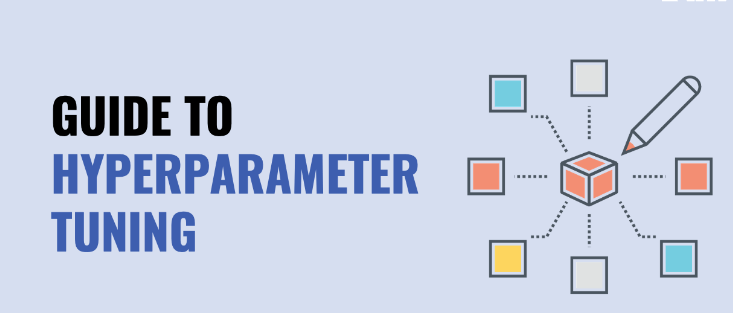A Comprehensive Guide on Hyperparameter Tuning
 Naveen
Naveen- 0
Hyperparameter tuning is an important step in the machine learning pipeline, as it can significantly impact the performance of your Machine learning model.
In this article, we will talk about what is hyperparameter tuning, its importance, how it works, popular techniques, its impact on model performance, and how we can choose the right hyperparameters for out machine learning model. We will also look at the code example to see how we can implement it.

What is hyperparameter tuning?
Hyperparameter tuning is the process of optimizing the hyperparameters of a machine learning model to improve its performance. Hyperparameters are the parameters that are not learned during the training process but are set by the machine learning engineer.
Examples of hyperparameters are learning rate, regularization strength, and the number of hidden layers in a neural network.
Why is hyperparameter tuning important?
Hyperparameter tuning is important because it can significantly impact the performance of a machine learning model. Choosing the right set of hyperparameters can lead to better model performance, faster convergence, and improved generalization.
On the other hand, poorly chosen hyperparameters can result in underfitting or overfitting, leading to low accuracy of your model performance.
How does hyperparameter tuning work?
Hyperparameter tuning finds for the best set of hyperparameters for your machine learning model. There are several techniques that can be used for this, such as grid search, random search, or more advanced optimization algorithms.
The goal is to find the hyperparameters that can give us the best result for a set of validation data that is not included in model training.
What are some popular hyperparameter tuning algorithms?
There are several popular hyperparameter tuning algorithms, including:
1 – Grid Search: It uses a different combination of all defined hyperparameters and their values and calculates the performance of each combination and selects the best value for the hyperparameters. This makes the processing time consuming and expensive based on the number of hyperparameters.
from sklearn.model_selection import GridSearchCV
from sklearn.svm import SVC
param_grid = {'C': [0.1, 1, 10], 'kernel': ['linear', 'rbf']}
grid_search = GridSearchCV(SVC(), param_grid, cv=5)
grid_search.fit(X_train, y_train)
2 – Random Search: In this method Random Search picks hyperparameter values randomly from a set of possible values. It is not computationally expensive as grid search, but it doesn’t give guarantee finding the absolute best combination of hyperparameters.
from sklearn.model_selection import RandomizedSearchCV
from sklearn.ensemble import RandomForestClassifier
param_dist = {'n_estimators': [10, 50, 100], 'max_depth': [None, 10, 20]}
random_search = RandomizedSearchCV(RandomForestClassifier(), param_dist, n_iter=10, cv=5)
random_search.fit(X_train, y_train)
3 – Bayesian Optimization: This method uses a probabilistic model to search for optimal hyperparameters. It is more efficient than grid search and random search because it uses prior knowledge to explore the search space more efficiently.
from skopt import BayesSearchCV
from sklearn.linear_model import LogisticRegression
param_space = {'C': (1e-6, 1e+6, 'log-uniform'), 'penalty': ['l1', 'l2']}
bayes_search = BayesSearchCV(LogisticRegression(), param_space, n_iter=50, cv=5)
bayes_search.fit(X_train, y_train)
What is the impact of hyperparameter tuning on model performance?
Hyperparameter tuning can improve the performance of your model by finding the best parameters for your model that minimizes the model error in the validation data.
This will be resulting in better performance of your model, better generalization, faster convergence, and better model performance. However, it is also important to avoid overfitting the validation data, as this can lead to poor performance of unseen data.
How do I choose the right hyperparameter tuning method for my machine learning model?
Choosing the right hyperparameter tuning method depends on several factors, including the size of the search space, the computational resources available, and the desired level of accuracy. Grid search is suitable for small search spaces, while random search and Bayesian optimization are more suitable for larger search spaces.
Bayesian optimization is particularly useful when computational resources are limited, as it can find good hyperparameter values with fewer iterations.
Conclusion
Hyperparameter tuning is an important step in the machine learning pipeline that can significantly affect model performance. After knowing all these techniques, you can easily decide which hyperparameter, you can choose the right method for your specific problem and improve the performance of your model.
